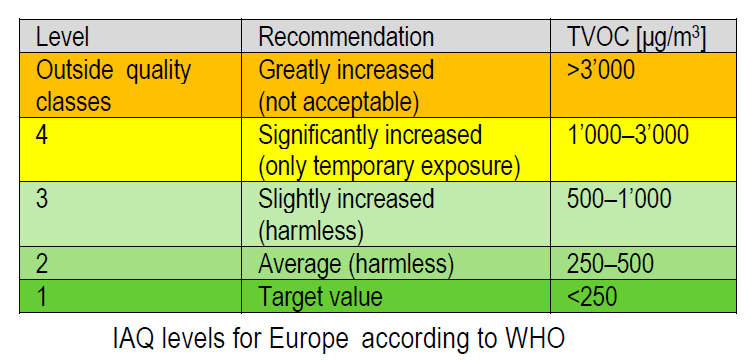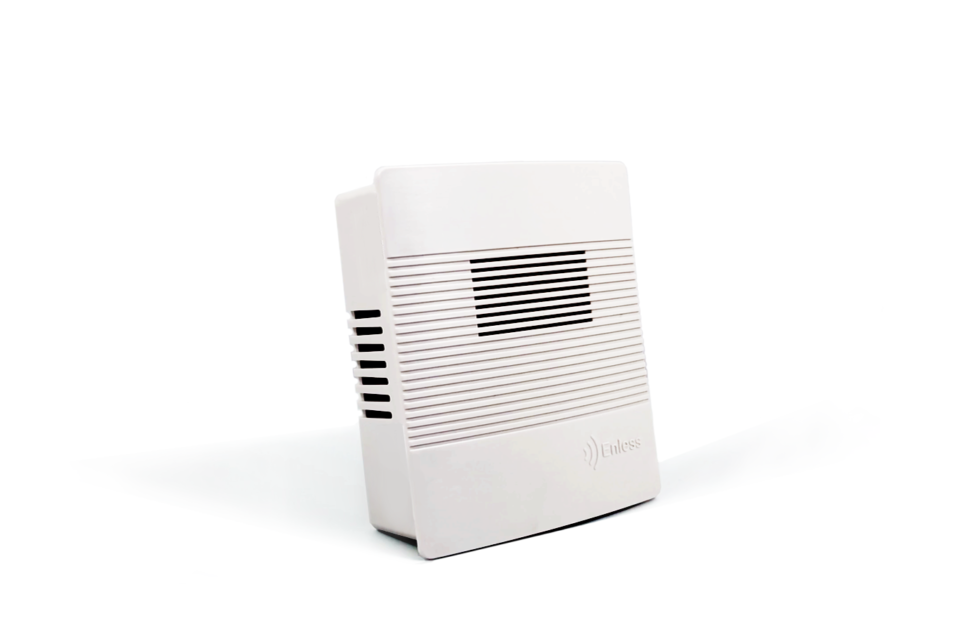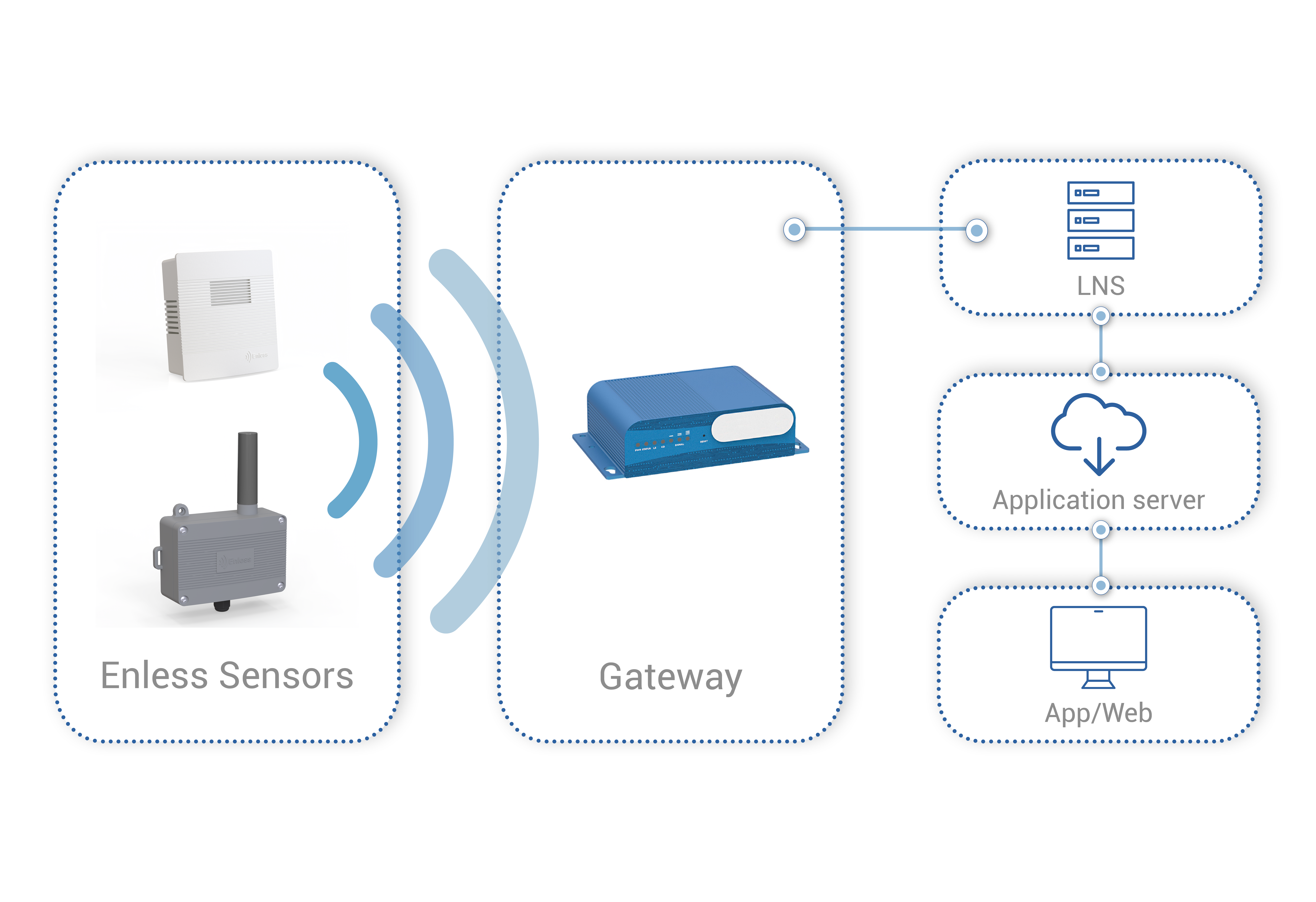Environment
In real life applications, the VOC level measures the abundance of various volatile organic compounds (VOC) that may be derived from building materials such as carpets and floors, furniture, paints, solvents, cosmetics, plastic products as well as gases emitted by cooking and cleaning activities.

Like CO2, VOC levels are directly related to indoor air quality and associated IAQ levels.
Poor air quality can directly affect the comfort, well-being and health of occupants and cause the “unhealthy building syndrome” that manifests itself in headaches, eye irritation or dizziness.
These symptoms can lead to reduced productivity and learning disabilities for students or school children.
Regulation and VOC thresholds allowed
Different standards define the regulatory thresholds beyond which it is recommended to take measures to lower the observed VOC levels.
The World Health Organization is in charge of establishing the recommended levels of volatile organic compounds in Europe.
It defines several levels/classes and estimates that, in excess of 1000 μg per m3 of air, there is a risk associated with continued exposure.
Above 3000 μg per m3 it prohibits any exposure, even temporary.
The reference value is set at less than 250 μg per m3.

Other standards such as the German standards or the LEED assessment system that has been developed to measure the environmental and energy performance of buildings highlight even more stringent thresholds and as such recommend limiting permitted VOC levels at less than 1000 ug per m3 of air and less than 500 μg per m3, respectively.
Measured values
The references for the Enless Wireless transmitters allowing the retrieval of VOC concentration data are as follows :
• TX VOC / T&H AMB 600-022
• TX CO2 / VOC / T&H AMB 600-023

The sensor used for VOC measurement is the SGP30 from Sensirion, a multi-ixel MOX gas sensor meeting high quality standards.
It was selected for its sensitivity to a wide range of volatile organic compounds and other gases relevant to indoor air quality measurement. 22 volatile organic compounds are measured.
VOCs include all carbon chain or core-based chemical compounds with a pressure greater than 0.01kPa under ambient temperature conditions.
VOC measurement process for Enless Wireless references 600-022 and 600-023
The ISO16000-29 Indoor Air Quality Standard emphasises standardised VOC detection methods.
Ethanol is the gas retained and used for the calibration and qualification of the SGP30 VOC sensor used in Enless Wireless transmitters.
Standard applications
Several applications require monitoring of IAQ levels by measuring VOC levels.
For example, the detection of a threshold of excessively high volatile organic compounds concentration will allow corrective actions to be taken for air purification, filtering and ventilation/aeration.
In addition, Enless Wireless transmitters are intelligent devices that can detect excess VOC levels and can help companies improve indoor air quality at their sites by identifying sources of bad air.
Click on the icons below to post this article on social networks >>>







